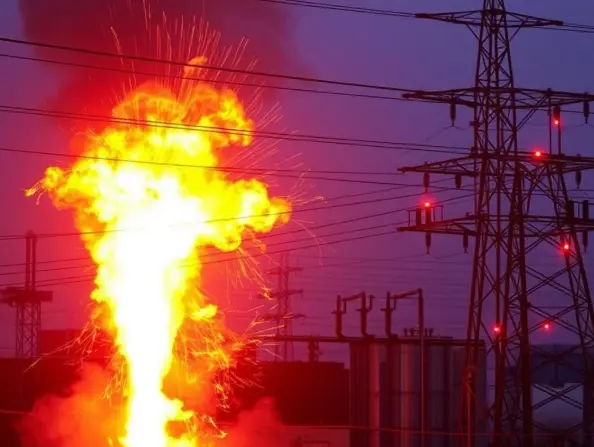
The Florida Power & Light Company’s Turkey Point Nuclear Generating Station about 20 miles south of Miami encountered a high energy arc flash (HEAF) in Cubicle 3AA06 of safety-related Bus 3A that ignited a fire and caused an explosion.
What Happened?
Installing a fire retardant wrap around electrical cables inside Switchgear Room 3A at the Turkey Point nuclear plant in Florida inadvertently triggered an explosion and fire. This fault led to an electrical bus failure and a reactor trip.
The electrical fault, which caused an arc flash or small explosion, also damaged a nearby fire door, which may have left other safety systems vulnerable had there been a fire. A plant worker who was in the room was injured and was treated at a local hospital.
Analysing the Root Cause:
Switchgear Fault
Impact:
- Arc flash/ Explosion
- Damage to surrounding equipment
- Injury caused to the worker
What could have been done to avoid this?
- Practise Preventive Maintenance: This entails the regular annual inspection of components including circuit breakers, disconnect points and switches. The components should be manually tested to ensure smooth functioning.
- Adopt remote operation: Executing potentially dangerous procedures remotely can help protect personnel from injuries.
- Perform hazard analysis and safety audits periodically.
- Provide comprehensive safety training to all operators and electricians.
- Practise workplace’s safety culture and develop strategies to increase their safety levels.
What should be done to avoid such incidents in the future:
To ensure safety of your employees and electrical infrastructure it is advised to get the following tests done:
- Arc Flash Hazard Study and Analysis:
- Assess the risks involved with incident energy released by an arc flash.
- Propose preventive measures to eliminate/minimize the risk of incident energy exposure.
- Recommend appropriate arc flash hazard protection protocols as per NFPA, IEEE, and IEC guidelines and standards.
- Provide adequate safety equipment and clothing for those operating on electrically energized equipment.
- Switchgear Risk Assessment:
- To determine risk thresholds/tolerable risk levels based on the occurrence and severity of the risk.
- Recommending risk reduction methodologies.
- Assessing the working environment, work procedures, and equipment conditions
- Examination of recent electrical hazards and the site’s history of electrical hazards.
Further, getting an Electrical Safety Audit (ESA) will help customers assist their assets more effectively, with fewer failures and outages, increased safety, and lower expenses.
Pictures and References:


https://allthingsnuclear.org/dlochbaum/update-turkey-point/
https://allthingsnuclear.org/dlochbaum/turkey-point-fire-and-explosion-at-the-nuclear-plant/
https://www.ishn.com/articles/106687-nrc-investigates-nuke-power-plant-electrical-fault

The Importance of Relay Coordination in Power System
Introduction Relays are protective elements that help control faults in a power system. Proper relay coordination helps isolate the fault sections from healthier sections in a power system. Being a fundamental part of ensuring reliability and operational continuity, the strategic configuration of protective relays is imperative in the design of a power system. One way […]

Which of these Facts About Arc Flashes are True?
Introduction In electric hazards, arc flashes are among the most dreadful threats. Despite their criticality, many myths surround arc flashes. Although IEEE and NFPA continuously strive to enhance awareness, five to ten arc flashes happen in the USA daily. We, at Care Labs understand the importance of maintaining a healthy electrical infrastructure. To help companies […]

